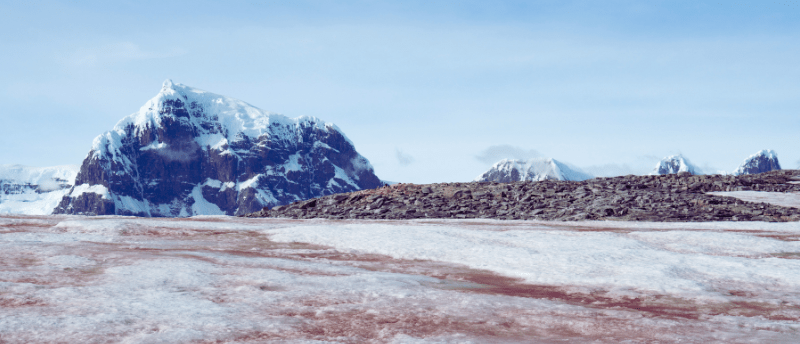Giant viruses feeding on algae could slow ice melting

Researchers have discovered giant viruses living on algae-blackened ice in the Arctic, which could be harnessed to reduce ice melting.
Ice in the Arctic is melting at an alarming rate. Now, researchers from Aarhus University (Denmark) have found a potential biocontrol: giant viruses. The researchers suspect that giant viruses feed on the algae found on ice sheets, which increase the rate of ice melting. While more research is needed, the researchers hope the viruses could be used to reduce the rate at which ice melts.
During spring in the Arctic, the days lengthen, and the sun rises higher in the sky, bringing life back to the area. This includes algae, which begin to bloom and blacken large areas of the ice. When the ice blackens, its ability to reflect the sun is limited, accelerating the ice’s melting. This increased melting contributes to the worsening of global warming.
To investigate the phenomenon, the researchers used metagenomic and metatranscriptomic techniques to analyze samples from dark ice, red snow and melting holes (cryoconite). They found signatures of active giant viruses, which is the first time they’ve been found on surface ice and snow that contains a high concentration of pigmented microalgae.
Sylvia Mitchell discusses her career in medicinal plant research, sharing the techniques she uses for plant tissue culturing and biochemical analyses, the importance of harnessing native plant species for sustainable practices and the commercial aspects of her field of research.
“There’s a whole ecosystem surrounding the algae. Besides bacteria, filamentous fungi and yeasts, there are protists eating the algae, different species of fungi parasitizing them and the giant viruses that we found, infecting them,” commented corresponding author Laura Perini. “In order to understand the biological controls acting on the algal blooms, we need to study these last three groups.”
Giant viruses are not as scary as they sound – they can grow up to 2.5 micrometers, which, although still not visible by the naked eye, is bigger than most bacteria. They also differ from normal viruses because they contain DNA, which they can translate to mRNA. It was this mRNA that the researchers looked at to ensure that the giant viruses’ DNA didn’t come from long-dead microorganisms. While DNA from dead viruses can be found in samples, mRNA is broken down much faster, and is therefore an important marker of viral activity. The researchers found the same markers in the sequenced mRNA as the sequenced DNA, indicating that the viruses are living and active on the ice.
Because giant viruses are a relatively new discovery, and this is the first time they’ve been found on surface ice and snow algae, the researchers are not sure what their role is. They suspect the viruses feed on the algae and hope they could be used to control the snow algae growth, which could reduce ice melting.
“We don’t know a lot about the viruses, but I think they could be useful as a way of alleviating ice melting caused by algal blooms. How specific they are and how efficient it would be, we do not know yet. But by exploring them further, we hope to answer some of those questions,” concluded Perini.
